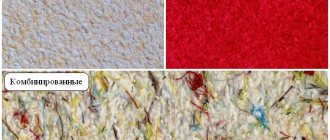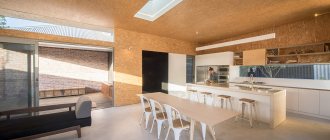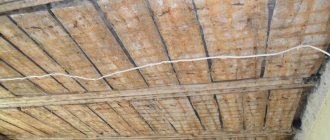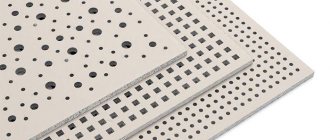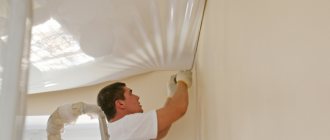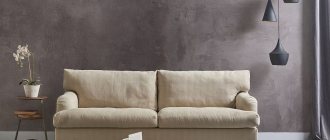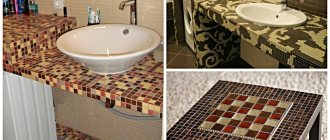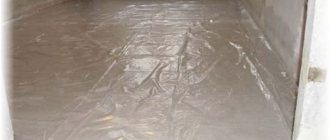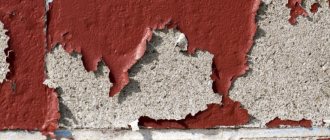Soundproofing methods
To determine soundproofing methods, you should first understand what sounds disturb a panel house and what you need to protect against. There are two main types of noise that are found in panel houses: impact and airborne. Speaking of airborne noise, it is transmitted through the air.
As a rule, these include a loud TV, a quarrel between neighbors behind the wall, or the operation of household appliances. As for the shock, its origin depends on whether the house is being renovated or not. It is transmitted over hard surfaces of the structure, and getting rid of it is much more difficult than airborne.
There are currently three main soundproofing methods recognized:
- Frame;
- Frameless;
- Floating.
The frame installation method is the installation of a frame base made of wooden beams or an aluminum profile. According to the technology, plates that absorb sound waves are placed between the guides of the structure. Afterwards, sound-reflecting materials are installed, which provide maximum protection from various noises and sounds. In some cases, the outer layer is not a reflective, but an absorbing surface.
As a rule, this finishing option is used for recording studios and similar premises. The main advantage of this method of sound insulation is its effectiveness. It is possible to reduce the noise level in the apartment as much as possible, while the cost of such insulation will be relatively low and quite affordable. The only downside is the loss of space in the room. If similar work is done on each wall, floor and ceilings, then the overall square footage may suffer by several square meters.
The frameless method of sound insulation involves the use of special slabs, panels and membranes of small thickness. In this soundproofing technology, the material is attached or glued directly to the surface of the wall and ceiling. The final stage of work is the use of finishing or thin cladding panels. If you carry out soundproofing measures correctly, you can create optimal conditions with minimal loss of space. In addition, without using a frame base, you can save on materials.
You can read more about this soundproofing method in this Article.
@Panel'nii dom
The floating method is suitable exclusively for flooring. The essence of insulation is that soundproofing material is laid on the subfloor, and a screed is made on top of it. Due to the fact that the floor base does not come into contact with the walls, a good soundproofing effect is obtained. Using this technology, you can not only get a floor through which no sound passes, but also achieve complete sound insulation by combining various technologies.
@Panel'nii dom
Of course, you can protect one wall through which sounds are constantly heard, but such work will not be considered effective, because only with combined insulation can the necessary results be achieved.
Cork soundproofing of walls – what to expect?
Soundproofing an apartment is not a big problem except for residents of private houses located far from noisy highways and railways. For city dwellers, even living in a separate house, noise is always a big nuisance. And there’s nothing to say about the numerous residents of panel houses - for them this is not just a nuisance, but a real, big problem, no matter how quietly the neighbors behave.
The relevance of this problem is confirmed by the fact that there is a huge variety of technologies and soundproofing materials. It is impossible to single out one single, best solution - in each case, many factors should be taken into account: the area of the room, the thickness of the ceilings and walls, budget possibilities and even relationships with neighbors.
For example, let’s take an apartment in a new building that is just beginning to be occupied by permanent residents. In this case, the purchase of a home is traditionally followed by renovation. New settlers, as a rule, are quite accommodating people, and can still find a common language with each other. You can agree with your upstairs neighbors to jointly soundproof their floors. If you can do this, then in your apartment it is no longer necessary to do the same procedure with the ceiling.
What remains are the walls, the sound insulation of which depends on their thickness, the area of your apartment and your budget. So, if the thickness of the walls is only some 15 cm (half a brick), then it will reflect noise up to 47 dB. In this case, a wall of two bricks will reflect all 60 dB. From these examples it is also clear that by increasing the thickness of the walls you will not achieve a great acoustic effect.
Depending on the area of your apartment, you can give preference either to thin materials that will “eat up” only a few centimeters on all sides, or to install full-fledged sound insulation using multi-layer structures (vibration insulation, mineral wool, plasterboard). However, in the second case, you will have to give at least 10 cm of space on each side.
Soundproofing walls in an apartment with cork (cork panels, cork wallpaper, panels) refers to the first case - when you need to save space. And at the same time, its use will not bring much effect in combination with thin walls, since the sound insulation index of the material is 12-15 dB, and the absorption coefficient is about 0.3 on a scale from 0 to 1.
For example, thin walls can reflect 47 dB. Plus a few centimeters and a dozen decibels will be taken over by finishing materials - plaster, putty, wallpaper. That is, in this case you will not hear the volume of a normal conversation (45 dB) from the neighboring apartment. Now we add 15 dB of the cork sound insulation index, we get a value of about 70 dB. And the child’s crying reaches all of 80 dB - and here you have the first noises. And if your neighbors like to listen to loud music (85-90 dB), cork insulation will not help you at all. Considering the high cost of the material, the cost of soundproofing with cork will be completely unjustified.
Types of cork coverings
As sound insulation, technical cork is used in several categories of coatings. It can be applied to surfaces in liquid form or attached as a sheet or panel.
Liquid coating
Finely dispersed cork with solvent and dyes is applied to building surfaces like regular paint. After drying, the result is a coating for walls and ceilings that has all the properties of cork material.
Panels
Cork panels are laid or glued to surfaces. The following materials are used for their manufacture:
- agglomerate, pressed from crumbs, but may contain 4% acrylic binder;
- an agglomerate covered with cork veneer and a protective layer applied on top.
Cork panels on walls
Veneer can be made from whole pieces of bark. Such products are of the highest quality and have a high price. The panels can be connected to each other using locks. Here they do not have to be glued, although it is possible to obtain reliable connections and eliminate gaps.
Technical coverage
Products are produced in the form of plates and rolls. They are intended mainly for insulation and sound insulation. The coating is used when creating a backing for wallpaper for walls or the main floor. The thickness of the rolls ranges from 2 to 10 mm.
Rolled cork for flooring
Cork insulation technology
Installation of plugs for thermal insulation of walls and floors is carried out taking into account the characteristics of the material:
- Rolled products must be unrolled before laying so that the web can rest and straighten in the appropriate temperature environment. Otherwise, installation difficulties will arise, since when rolled up the cork takes on a characteristic shape;
- It is easier to work with sheet cork than with the rolled version. However, you will have to follow the technology of fitting individual fragments, which is especially difficult in corner areas.
When choosing an adhesive for laying cork, take into account that different compositions provide different adhesion abilities. The properties of fixing substances determine such aspects as the speed of installation work and the permissible time frame for the start of operation of the facility.
Tools and materials
When laying cork to insulate walls inside an apartment, the following set of tools and materials is required:
- sander;
- jigsaw, sharp knife;
- primer;
- tape measure, marker;
- laser level or painting cord;
- glue, spatula;
- sealant;
- water-based varnish, roller or brush.
To insulate with cork, you will need a grinder.
You also need to prepare the required amount of cork insulation of the desired brand.
Necessary calculations
When planning to insulate walls with cork from inside the apartment, calculations should be made based on the area and features of the surface being equipped. It is also important to make markings to ensure the correct lines for laying the insulation coating:
- on the wall, a perfectly straight vertical line is struck from the corner using a laser tool or painting cord;
- stepping back from the upper boundary of the wall under the ceiling, determine the horizontal.
If thermal insulation from tiled cork is planned, horizontal lines are marked across the entire area of the wall, since the coating is laid from the lower perimeter. Installation of roll sheets is carried out similarly to gluing wallpaper.
Insulation and finishing of walls and ceilings
Cork insulation is installed end-to-end. Roll sheets prepared along the length are glued starting from the vertical line. The sheet insulator is laid from the bottom of the wall. Moreover, horizontal lines determine the location of the rows of tile cork. Ceiling insulation is carried out according to a similar scheme.
The adhesive is applied according to the manufacturer's instructions, on both surfaces or only on one - on the tiles or the base being installed. The gaps are filled with a special sealant for cork coverings. After complete drying, finishing work is performed. Most often, cork on the wall and ceiling is treated with a colorless water-based varnish.
Despite the high cost of the material, cork insulation is in demand due to its high performance and decorative characteristics. The service life of insulation is commensurate with the resource of the structure itself, which makes cork relevant for insulating the walls of apartments and country houses.
Soundproofing with cork, or how much you are willing to increase the thickness of the walls
Thirty millimeters of balsa wood in terms of sound insulation properties corresponds to 150 millimeters of reinforced concrete or 10 centimeters of pine timber. In this case, you are usually guaranteed a noise reduction of 20-50 decibels. What happens, based on the above about the mythical properties of cork, is all this just advertising tricks? As for decibels, it’s quite possible, but as for the correspondence between materials, everything is really true. But just remember how well the walls in a panel house, where reinforced concrete slabs are used as the material, protect against noise. You can hear your neighbors perfectly, but if the walls were three times thicker, and with a layer of insulation, then silence would undoubtedly reign in every apartment. Likewise, sound insulation with cork, if you use panels made of this material laid in one layer (the thickness of which does not exceed 10.5 millimeters), the effect will be insignificant. But increase the thickness of the insulation, put an additional layer of insulation on top and decorative panels, for example, siding on the walls and laminate on the floor, and you will immediately feel the result.
Getting a technical plug
Waste cork bark is crushed and then pressed and steamed. Sometimes binders are used, but you can do without them, since the cork contains natural glue.
The technology for making cork products is called agglomeration. Moreover, they differ in color: dark is obtained from the bark of the trunk, and light is obtained from the bark of the branches.
Dark and light agglomerate
Note! The cellular structure of the material provides high sound insulation and also does not allow gas and water to pass through.
Selection and calculation of materials
When choosing, take into account:
Room type
The temperature and humidity characteristic of the room are taken into account. Hygroscopic materials should not be used in the kitchen or bathroom. Room dimensions
The thicker the finishing layer, the more usable area it will take up. For small rooms, frameless sound insulation of walls is suitable; for larger rooms, the choice is wider. Quality, composition. Panels for interior decoration should not contain toxic glue, resins, formaldehyde, or lead. Methods and nuances of installation. Heavy bulky panels are difficult to install. Mineral wool produces dust from which the respiratory tract must be protected. Cork panels require a perfectly level base.
To seal the joints and level the insulation layer, a primer, putty, sealants, foam, mounting tape, and film are required. To calculate the amount of material, it is necessary to measure the walls in height, length, and calculate the area. You should purchase the material in reserve.
Mineral wool
Popular, accessible material. It is mounted on a frame, retains heat well, but does not insulate sound enough. The optimal result can be achieved when combined with plasterboard with membrane insulation.
The insulation layer using cotton wool is thick, so it takes up part of the room area. It cannot be used in rooms with high humidity: in the kitchen, in the bathroom. When wet, cotton wool loses its properties and becomes a favorable environment for the development of bacteria.
Cork panels
Modern environmentally friendly material for frameless sound insulation. Thin cork panels are glued directly onto the prepared base.
It is important to level it and treat it with an adhesion-increasing primer. Cork sound insulation is used under wallpaper and as a final covering
They produce panels of different sizes, textures, and shades. The slabs are thin and do not take up any useful space in the room.
Polyurethane boards
Polyurethane slabs are thin, durable, and superior to most other materials in terms of insulation. They are easy to install, last a long time, and are impervious to moisture.
Soundproofing membranes
Fine sound insulation for walls in an apartment includes membranes. They are up to 2 mm thick, elastic, tear-resistant. In terms of sound protection, thin sound insulation is inferior to panels. It is recommended for use with mineral wool and plasterboard, as well as for soundproofing interior walls.
Soundproofing panels
Soundproofing panels are rarely used for finishing walls in apartments. This is a more expensive but effective material. Sandwich panels are thick, bulky, take up useful space in the room, installation cannot be handled by one person, so you will need to call an assistant. Soundproofing panels are used in public institutions, recording studios and for finishing private houses.
Other materials
For liquid sound insulation of walls adjacent to neighbors in apartments, polyurethane foam is used. It is sprayed onto the surface, filling cracks and holes. The foam sets to form a light, durable layer. No base preparation is required. The material reduces heat loss. Liquid sound insulation seals the cracks through which rodents and insects enter.
Soundproofing plaster in appearance, consistency, and method of application does not differ from ordinary wall plaster. A sound-absorbing filler is added to it, due to which this effect occurs. Creates a dense, crack-free coating. You can level, paint, or tint the coating.
Polystyrene foam is a cheap material also suitable for sound insulation. It insulates, insulates, and is easily secured. To make the wall reflect sounds, it is worth supplementing the foam with a thin membrane soundproofing material.
Characteristics and properties of cork insulation
To install cork soundproofing of the ceiling in an apartment, roll and slab materials are used. Crushed cork is used to make them. It undergoes special processing and is pressed. The combination of individual granules into one coating occurs without the use of an adhesive mixture. For this, natural substances found in tree bark are used. That is why we can say that cork insulation is 100% environmentally friendly and safe for people.
The damping of sound waves occurs due to the large number of air cavities and pockets located in the structure of the material. They are also responsible for maintaining heat in the room. In addition to heat and sound insulation of rooms, cork is used as a floor covering or a substrate for floor finishing. It is also used to line the walls and ceiling of a room for decorative purposes.
Attention! Technical cork is used as ceiling sound insulation, which has an affordable price and increased thickness. The decorative properties of this material allow it to be used as a front finish.
Soundproofing a ceiling with cork will be effective if it is used in combination with other soundproofing materials. The cork itself well dampens sound waves propagating inside the room, but does not protect against sounds coming from other rooms and floors. Cork on the ceiling and walls protects neighbors from noise coming from your apartment. It only dampens impact noise well, but does not prevent sounds from other apartments from penetrating to you.
Cork sound insulation is used in an apartment where a loud music lover lives, or where a home theater is installed. This is the only way you can be sure that loud sounds coming from your premises do not disturb your neighbors.
It is appropriate to use cork in comprehensive soundproofing of an apartment. Other sound insulators will protect against external noise, and cork will protect against shock sound waves spreading across the ceiling from the upper floor. Also, the cork covering will not allow sound waves from your apartment to penetrate into neighboring rooms.
Cork wall covering
Before you start working with the material, you need to let it acclimatize inside the apartment. After purchase, the cork flooring should be left in the package for 2-3 days, and only then can you start working with tiles or rolls.
The gluing process takes place in several stages:
- The surface of the wall is checked, if it is covered with plasterboard, then the surface should be treated with a primer. This is necessary so that the drywall does not get wet from the glue. Old wallpaper, glue, paint are removed from the wall, and only then the surface is primed so that it becomes smooth.
- Measure the width of the wall to correctly mark the location of the first panel or tile.
- The vertical is outlined using a plumb line, which must be placed on the edge of the first tile, panel or strip of wallpaper.
- The cork backing in rolls must be taken out and placed under a load for a day, which will facilitate the gluing process. If it is necessary to make markings, it is recommended to use the outer side. Cork in tiles or panels does not need to be leveled, but such material should be checked for uniformity.
- Apply the glue with a roller to the surface of the substrate and to the wall, after which you need to wait a few minutes for it to be absorbed. Then you can glue the material to the wall, walk over the substrate with a roller, and tap it with a hammer - wooden or rubber.
- The gluing process begins from the center of the wall, having previously made markings to the sides, down and top. The substrate must be glued in the indicated directions. The tile must be held tightly, so after applying it to the wall, it is tapped with a hammer and pressed with a roller.
- Excess parts of the cork are cut off with a knife.
Cork backing in the form of slabs or panels perfectly replaces wallpaper, giving the room warmth and comfort. To improve durability in use, it is recommended to treat the material after gluing with two layers of varnish.
To glue the material, you should use the following types of glue:
To apply it to the cork, you should use a notched spatula, which will allow you to evenly distribute the glue on the surface of the material.
Insulation and soundproofing of the apartment inside with cork-coated panels
When deciding to decorate walls with soundproofing panels, you need to keep the following points in mind:
- For the maximum possible noise and heat insulation, you need to take solid sheets or rolls 4 mm thick.
This is the optimal thickness. Especially for apartments in a new building: a smaller one will be ineffective, a larger one will be too expensive.
- If the sheets or rolls are rough, and the wall, despite all its decorativeness, should remain cork, after rough soundproofing the walls with a cork backing, purchase additional cork wallpaper and tiles with a cork decorative layer 1-2 mm thick.
- The fewer joints between the elements of the cork covering, the better. In the event of a divergence in the seams between panels or sheets glued to the joint, as the new building inevitably settles, thin inserts are cut from a material of a similar composition and thickness and glued into the places where the seams have diverged. Therefore, at least one sheet, rolled up for compactness, should be kept in stock after the repair is completed.
- The larger the room whose walls are covered with cork, the larger the size of the sheets or rolls for pasting should be.
- When gluing cork in bathrooms, you should choose waterproof adhesives that do not swell from moisture.
- It is better to use latex-acrylic or acrylic glue - they are universal. They can be used to pre-coat both the cork sheet and the wall. Simultaneous application of glue both to the wall and to the material being glued is required in cases where the material is large in mass (usually 10 mm thick and above).
What is good about cork sound insulation?
The area of application of oak bark is quite narrow: the production of bottle caps, the manufacture of shoes. The process generates 60% waste, from which cork is made, which is suitable for insulating home theaters, recording studios, and bedrooms in houses.
The coating is environmentally friendly, natural, and does not emit any harmful substances. It contains carbon, oxygen, nitrogen, and hydrogen. The ratio of chemical elements varies depending on the method of processing the source material - oak bark.
It has a high thermal insulation effect, which is due to the porous structure. A layer of cork 3 cm thick has the same thermal insulation properties as 3.5 cm of mineral wool, 15 cm of oak wood, 20 cm of concrete, 400 mm of brickwork.
The material efficiently absorbs high-frequency sounds: screaming, barking dogs, TV sound. Low frequency noise, vibration absorbs worse. For example, to reduce the sound level by 40 dB, the walls must be covered with cork 1 cm thick, which is equivalent to 10 cm of wood, 70 cm of brickwork. The material, like other sound insulators, copes better with noise when located in front of the direct source of noise.
Cork on the walls
Types of sound insulation in a monolithic house
For monolithic houses, both full and partial sound insulation is used - the choice of methods depends on the budget of the work and the level of silence required by the apartment owner. You can avoid unnecessary costs only if you carefully select the building material - the modern market offers a wide range in different price categories. When choosing, you should focus on the optimal balance between price and quality of products.
Might be interesting
Apartment soundproofing scheme
For complete sound insulation, the following work is required:
- floor soundproofing;
- ceiling soundproofing;
- sound insulation of inter-apartment walls;
- soundproofing of interior partitions;
- replacement of low-quality windows and doors.
You can carry out the work either independently or with the assistance of specialists. Today there are many organizations specializing in soundproofing houses and apartments, and, if you have the slightest experience in construction, it is recommended to trust the professionals.
However, for an experienced homeowner, soundproofing an apartment with your own hands does not fall into the category of complex work, and is comparable to carrying out a major overhaul.
Partial sound insulation is used to localize a separate area of the apartment, which is the strongest source of noise.
As a rule, such work consists of eliminating minor defects made during construction and can be easily carried out on one’s own.
The most popular methods of partial sound insulation include the following:
- insulation of entrance doors. Often, when installing them, installers do not completely fill the voids with insulating materials, which negatively affects the ability to absorb sounds. You can use both polyurethane foam and a more modern material that is superior in quality - non-hardening sealant;
- window insulation. The work also includes filling voids and adjusting double-glazed windows;
- insulation of sockets, junction boxes and other equipment that is a source of sound from neighbors;
- It is recommended to insulate sewer risers using foamed polystyrene. Modern plastic pipes transmit sound perfectly, and the entire entrance can often hear when you go to the restroom.
Ceiling soundproofing
The soundproofing layer on the ceiling serves to get rid of the clatter of neighbors living above.
A common way is to create a suspended ceiling, which will require sacrificing the volume of the room. A thin cork coating will not create sound insulation; it is advisable to use it together with other materials. When using a multilayer structure of different densities, the soundproofing effect increases. If only cork plates are used, their thickness should be at least 3 cm.
Cover installation procedure:
- The ceiling is being leveled. It is not recommended to use gypsum putties.
- The surface is degreased and a primer is applied, which can be an aqueous solution of glue or a special cement-based primer.
- The surface of the ceiling is divided into 4 identical sections, its center is located.
- The central tile is applied and outlined. Then places for the rest are marked.
- The adhesive is evenly applied to both surfaces, after which the tiles are attached to the ceiling. After finishing the work, you should go over the slabs with a roller, thus ensuring a reliable fit.
Cork ceiling
Cork selection
Products are selected not by manufacturer, but by country of origin. Chinese products are not recommended due to fragility and poor quality manufacturing.
Good cork is produced in Portugal. For example, or Ibercork, which creates technical, floor, and wall materials.
If you need to find the most decorative types, the Corksibas brand is suitable, and it is recommended to consider multi-layer products for a floating floor from. Although the latter stand out on the market with high prices.
Panels with locks for installation are more expensive than those that need to be glued.
Soundproofing problem in the bathroom
When purchasing an apartment, owners pay attention to the shortcomings, including sound insulation. These are not only loud, audible sounds from the street, landing, neighbors’ apartment
But also audibility in the bathroom. This may come to light later, while taking a bath, or while relaxing, you can hear a child playing a computer game or a neighbor watching TV. You can often hear the noise of a descending elevator, the voices of animals, or water draining from neighbors above.
This does not allow you to comfortably take a bath or relax after a working day. Drain pipes are often not insulated (even in new houses). At night you can hear the sound of water draining or the sound of a cast iron bathtub filling.
To carry out the soundproofing process, you need materials, tools and knowledge of the stages of work. Properly done sound insulation will eliminate annoying sounds at night and bring comfort and peace of mind.
Possibilities and advantages of cork covering
The coating described is multilayer and is produced by pressing oak bark and other wood elements.
The decorative one is made of cork veneer, which can have different colors and textures, due to which the general appearance of the coating is determined.
Wax is used as a protective layer. The coating is available in different variations, with different sizes:
- Wallpaper. They are easily mounted on walls and are inexpensive. They are sold both with and without a self-adhesive base; in the second case, special glue is used for installation. Wallpapers are available in sizes 5500x760 mm or 8000x500 mm.
Plates are easy and quick to install
Roll coating. Produced with a thickness of 2 mm, installation is possible only with the use of an adhesive composition. Compared to wallpaper, the coating is several times better and more durable, but its installation is more difficult. Wall plates. Slabs are produced from the remnants left over from wallpaper and rolls, but they are not inferior in quality. The dimensions of the slabs can be 300x300 mm or 600x300 mm. The main advantage is the ease of installation and minimal preparatory work; the walls may not be ideal, the slabs will hide all possible defects.
When choosing cork material for wall insulation, you need to know that it can dampen three types of noise:
- vibration sounds;
- structural noise that occurs from vibrations;
- impact noises.
Cork material can not only suppress sounds, it also has other advantages presented in the table:
| № | Advantages | Description |
| 1 | Use as a finishing material. | Good appearance, so they do not need to be covered with other finishing materials. |
| 2 | Environmentally friendly. | The cork is made from natural raw materials that do not absorb odors and do not rot. |
| 3 | Noise insulation. | Ideal for soundproofing a room, because sound absorption is several times higher than the properties of other building materials and mixtures. |
| 4 | Low thermal conductivity. | Used for additional insulation of premises. Compared to a 10 cm pine board, 3 cm cork has similar thermal protection properties. |
| 5 | Does not collect or attract dust. |
How to increase the effectiveness of cork sound insulation
Noise insulation cork, regardless of its thickness, has a low coefficient of reduction of low-frequency noise; if the home is located in an old communal building, additional measures must be taken to reduce noise.
Most often, it is necessary to reduce the living space by about 4-7% by installing sheathing made of wooden blocks on the walls. Mineral wool is tightly placed between them, and the sheathing itself is covered with plywood or fiberboard. And only then is this covering covered with cork wallpaper or rolls.
In such cases, the thickness of the cork layer can be quite small - from 1 to 3 mm, this is quite enough to dampen residual sounds that break through the mineral wool. This also results in significant cost savings.
Another, no less frequently used way to enhance sound insulation is to install plasterboard on the walls, which can be accompanied by a bent metal sheathing with a thickness of 0.3 to 0.8 mm. This sheathing is made either from aluminum or galvanized profile. Drywall, just like fiberboard or plywood, is covered with cork wallpaper on top. Or a rolled cork with a cork veneer glued on top of it, which differs from the underlying layer in being more decorative. Just do not forget to pre-treat both plywood and fiberboard, as well as drywall, with a primer, twice in order to avoid intensive drawing of moisture from the glue applied to them and to increase the adhesion of the glue.
Wall joints, cracks
The most common conductor of extraneous sounds from adjacent apartments are wall defects in the form of cracks and cracks. Cracks most often form during the settlement of walls in large-panel construction. Their location is the corners of the room and the meeting points of walls and floors, as well as walls and ceilings. In this case, the walls at the places where they converge must be completely cleaned of old plaster. And foam the exposed defects with polyurethane foam, having previously sprayed them with water from a spray bottle - this will improve foam formation and adhesion of the foam to the wall material.
The same is done with cracks found in the wall. If they are not long and wide (up to 1 mm), then it is easier to cover them with construction putty.
Another channel for the passage of extraneous sounds from adjacent rooms is sockets. If you consider that non-permanent walls between apartments, especially in old houses, are only one brick laid flat thick, and the depth of the technological hole for sockets is at least 5 cm, then you can imagine what kind of sound channel opens at the location of its placement. And sometimes unscrupulous builders didn’t bother at all, and made a through hole, where they brought out the wiring from different sides, into both apartments, and inserted two sockets into opposite sides of the hole. Separating them only with a piece of cardboard or nothing at all. You can imagine the audibility in such a sound guide!
In order to minimize the passage of extraneous sounds through the sockets, the “filling” of the socket is removed from the wall along with the glass insert. The space behind it is slightly deepened, densely laid with mineral wool, and sealed with construction putty. Then the glass with the wires previously routed into it is inserted into place, and the position of the glass is additionally strengthened with another portion of putty. After it has hardened, they put the socket fittings in place and push them apart inside the glass by tightening the screws that spread the thrust legs. Then they carefully cover the space around it with scraps of cork tiles or rolls to match the wall. Only then do they cover the outlet with a decorative top panel with sockets for electrical appliance plugs.
Soundproofing the junction of wall and floor
The most difficult case of eliminating sound leaks from a neighboring apartment is the junction of the wall and the floor under the baseboard.
If the cement screed on the floor was made without a technological gap between the screed itself and the wall, and even if this oversight was reinforced by fastening the baseboard to the floor and the wall simultaneously, then the passage of extraneous sounds both from below and from behind the wall is guaranteed.
To avoid this, sound-damping material must first be tightly placed into the gap left between the screed and the wall (this can also be cuttings along the width of the gap from thick cork flooring). And only then they finish installing the cork or combined covering on the wall. The baseboards are attached last, tightening them with screws either to the wall or to the floor. But not both at the same time.
Types of cork coverings
Cork products come in several formats. Manufacturers promote maximum choice. Depending on the conditions, purpose, surface, you need to consider the detailed characteristics of each type of plug.
Liquid product
Crushed bark can be produced in the form of a finely dispersed product, which contains solvents and dyes. The principle of applying insulation is not very different from the technology of surface treatment with conventional paint.
After the applied coating dries, a single seamless fabric is formed on the walls and ceiling, which will fulfill the main purpose of the material.
Using liquid joint sealer
To distribute cork paint, a spray gun is used to uniformly spray two layers of paint. Each layer must first dry, the application thickness is 2-6 mm.
Panel blanks
With ready-made cork cuts you can quickly cover walls or other surfaces in the house. For installation, you can use glue, or take panels that are fastened using the tongue-and-groove principle.
There are two types of panel insulation, differing in composition. Products made from compressed wood chips may include up to 4% acrylic-based binder component. Another option is panels with a layer of cork veneer and a protective coating.
Wall panels
The advantage of veneer is that it is made from solid pieces of cork. Veneered material is the highest quality type of cladding, more expensive than cork analogues.
The panels are made with locks; installation can be done without fasteners or glue.
Technical cladding
The technical type noise insulation product is thin, flexible and sold in rolls. The thickness of the material can be only a few millimeters; it can be used as a layer between the base and the finishing. This is a good way to cover walls and floors.
What does rolled technical insulation look like?
If you choose decorative raw materials, coating may not be required.
Darker rolls are used as cladding, which will be covered by finishing, and light colors are used for decoration.
Soundproofing the floor
Sound insulation at the bottom of the space is hidden under the flooring, for example, panel parquet, laminate, parquet boards. They lay it under the linoleum if the cladding is hard enough.
Cork is best suited as a base for laying solid finishing raw materials; it is highly hygroscopic, absorbs sounds and partially eliminates defects of the main surface.
Before spreading the raw materials, it is necessary to completely clean the concrete, eliminate strong defects and glue soundproofing tape around the perimeter of the room. The joints of the first thin layer of polyethylene foam are taped.
The next step is to lay out a polypropylene backing or plywood, 3 cm thick, in a checkerboard pattern. It is recommended to lay out 2 layers with offset joints.
Then, a cork layer is laid so that it covers the seams of the previous coating, and new joint areas are also taped.
Soundproofing the floor
Sound insulation with technical cork is made from a substrate under panel parquet, parquet boards, laminate. Cork underlay is used for linoleum if it is hard enough. It is ideal as a base for hard coverings, since it fully satisfies the requirements of hygroscopicity, high sound absorption, leveling of small irregularities, and also allows you to lay the floor evenly. Mostly rolled material is used, which is well pressed down with panels or tiles on top.
Cork underlayment under flooring
Before laying, the concrete slab is prepared: debris is removed, cracks are sealed, and unevenness is removed. Along the perimeter of the room, on the lower part of the wall, it is necessary to glue sound insulation tape. If thermal insulation is not required, the first layer of noise insulation based on polyethylene foam is laid on the concrete. The joints of the film are taped with tape.
A 3 cm thick polypropylene backing or plywood is laid on the sound insulation surface in a checkerboard pattern . It is better to apply 2 layers of panels, but so that the joints do not coincide. A rolled cork backing is laid on the plywood. Docking is done using tape.
The last step is installation of the finishing coating. Then the excess soundproofing tape around the perimeter is trimmed and the baseboard is installed.
Cork flooring can be installed as a topcoat and will also have sound insulation properties. It is produced in the form of tiles that can be glued to the base. They can be of different colors or with a pattern. The floor is water resistant and can be used in any room.
Cork material is used as veneer glued onto MDF. Both of them have noise-insulating properties. They are made in the form of panels, which are assembled in a similar way to interlocking laminate. The disadvantage is that MDF swells when exposed to water. When assembling the floor, the sheets of the next row are installed with tenons into the grooves, first at an angle of 300, and then lowered with pressing until a tight connection is formed.
How to choose a wallpaper backing?
The most popular soundproofing of walls under wallpaper today is using cork insulation. Thanks to it, it is possible to hide various flaws on the walls, which simplifies the subsequent wallpapering. Recording studios are often covered with this material because it absorbs sound perfectly. But the quality of sound insulation depends on the thickness of the substrate. For example, thin sound insulation will not protect the room from loud sounds (screams of neighbors, annoying roar of industrial equipment, etc.).
Concrete freezes quickly and strongly, so for concrete walls it is better to choose foamed polyethylene, which retains heat well in the room. This substrate also comes with two layers of paper (“Polif”), which is environmentally friendly and resistant to fungus and bacteria. Sound insulation under wallpaper in an apartment of this type also allows you to protect walls with low thermal protection characteristics from moisture.
In addition to the above-mentioned substrates, non-woven fabric is widely used because it allows evaporation to pass through, which allows the walls to conduct air and remove moisture from the room. It is also suitable for soundproofing walls in an apartment under wallpaper.
If the walls have defects or a special design, many people use a backing made of plywood and plasterboard.
If noise and sound insulation material made from polyethylene foam is more suitable for walls, then you need to know its types. Today this polymer is produced in three forms:
- gas foam, not cross-linked;
- chemically cross-linked;
- physically stitched.
In the first case, the material is the cheapest, since its manufacturing process is very simple. Its sound insulation, heat insulation and strength characteristics are 25% lower than those of other types of polyethylene. Therefore, one should not be surprised that a soundproofing substrate made of non-crosslinked gas-foamed polyethylene does not achieve the desired effect and does not last long.
Cross-linked polyethylene is characterized by closed pores.
Physically and chemically cross-linked polyethylenes have almost identical characteristics, although they are made using different technologies.
When choosing a polyethylene backing, you need to pay attention to the visible properties of the material: color (must be uniform), strength of attachment of the paper to the base, absence of odor, elasticity (after pressing the material with your fingers, it should quickly restore its previous shape). Correctly selected roll sound insulation of walls under wallpaper will make your life in the apartment more comfortable, as it will protect you from the cold and the screams of your neighbors
Correctly selected roll sound insulation of walls under wallpaper will make your life in the apartment more comfortable, as it will protect you from the cold and the screams of your neighbors.
Sound insulation of walls
Cork is good for walls. Before applying it, all cracks in the walls should be repaired. Sound travels well through the openings for sockets and switches. If there are voids, they are filled with dense mineral wool, after which the hole is sealed with cement mortar or putty. After this, the socket is installed in place.
Might be interesting
Sound insulation of walls
In panel houses, noise is transmitted at the joints of the slabs. It can be significantly reduced if you remove the plaster at the corners and fill the joints with foam. This is not necessary in monolithic structures.
Coating features
Before gluing the cork, the walls are primed to increase the strength of the connection. The optimal thickness of the panels is 3 cm. If it is smaller, the wall covering does not provide the proper sound insulation effect, and making it thicker is unprofitable, since a plasterboard structure with mineral wool panels wins in terms of price/quality ratio. Here you can combine it by gluing cork wallpaper onto a soundproofing plasterboard wall as a decorative finish.
Wallpaper is made on a paper base, onto which varnish is first applied, and then agglomerated cork veneer 1 mm thick is glued.
Wallpaper made from cork
A thin layer of cork reduces noise levels from outside if you follow the following rules:
- Multi-layering improves sound insulation. A thin protective coating is unlikely to help, but a wallpaper backing made from technical cork will provide some protection from sounds. The result is also obtained by a gypsum plasterboard structure with cork wallpaper glued to it on the outside and a layer of thermal insulation applied from the inside by spraying. You just shouldn’t count on wallpaper, due to its small thickness. They will only muffle the sounds inside the room a little.
- Additional coating of the joints of cork tiles allows you to obtain a seamless coating.
- The joints of the upper layers should not coincide with the lower ones.
Is it possible to use such sound protection if it has a directional effect? Obviously, yes, since there is no need to turn down the sounds of the TV or audio equipment in the evenings, and children can calmly play musical instruments.
Cork tiles should be glued to the base in a checkerboard pattern. If they are thin, make a two-layer coating. In this case, it is better to make the outer layer with veneer, and for the inner layer, technical cork is quite suitable.
Choosing the type of cork covering
There is no particular variety in the shape of the products. They are available in rolls and sheets. The sheets are very diverse. Their thickness ranges from 2 mm to 50 mm. Panels without veneer are made of black or white agglomerate. The first one is more used for internal layers and substrate, and the last one is better suited as a finishing material.
The top of the cork can be covered with other decorative material. The simplest is a layer of varnish. In rooms with high humidity, the walls are coated with sealant varnish. It is applied with a soft roller. After hardening, the wall is not afraid of wet cleaning. If the protective layer is damaged, it can be restored by reapplying varnish.
Advantages of sound insulation with cork
The most important advantage is the naturalness of the coating. In the production of rolls, no aggressive chemicals or harmful fillers are used, therefore the product is indicated for installation in children's rooms and rooms with high requirements for environmental friendliness of materials.
Additional benefits:
- Aesthetics. After installation, the cork does not need to be coated; it is enough to varnish it for ease of maintenance.
- Versatility. The insulator can be mounted on the ceiling or walls - this will increase the efficiency of sound absorption.
- Sound absorption coefficient 0.85 at wave frequencies up to 2.1 kHz. But the cork coating dampens vibration worse.
- Low thermal conductivity will ensure maintaining a comfortable temperature in the room.
- Cork fabric does not accumulate static electricity or dust. Durable mats have the necessary flexibility, which facilitates the installation process.
- Non-flammability. During the production process, sheets are treated with impregnations that reduce susceptibility to fire. This will not save you from an open flame, but the cork does not spread the fire and extinguishes itself when ignited.
The surface does not require effort when cleaning, and if you varnish the coating, it will retain its cleanliness and appearance for a long time. Sometimes buyers are confused by the high price of products, but here you should know: self-adhesive panels made from technical cork will cost less.
Materials for soundproofing an apartment
In order to insulate an apartment, it is necessary to choose the appropriate soundproofing materials correctly. Today the market provides a huge selection of building materials that can be selected not only by characteristics, but also by cost. Depending on the expected budget, you can choose the most suitable sound insulation.
Rolled soft sound insulation
Due to its soft porous structure, the product copes well with various types of noise. Roll insulation has a relatively small thickness, so it is suitable for both frame and frameless sound insulation methods. Sound waves are distributed throughout the product without entering the room in full.
Cotton slabs
Mineral wool is considered one of the options for insulating materials. Basalt or ecowool are also often used. All products have a fibrous structure, due to which this effect is achieved. The fibers are randomly arranged, and the product has excellent vapor permeability. Different cotton slabs differ in the production method and raw materials used. As a rule, such slabs are used for frame sound insulation, but they can also be glued directly to walls and ceilings
If mineral wool is installed in a frame, it is important that the slab fits tightly into the guides. The slightest cracks and voids reduce the level of acoustic protection
Read more about Rockwool company materials HERE
Cork insulation
Cork building material is considered an ideal sound insulation option. It is worth noting that it is made from natural raw materials, crushed cork bark, and cannot have a negative impact on the human body or pets. The porous structure guarantees good sound insulation and also has a noise-absorbing effect. Essentially, cork is an ideal soundproofing layer that provides sound absorption and sound insulation. The only thing that is not entirely acceptable is the cost of the product.
@Panel'nii dom
Criterias of choice
When choosing a plug for insulating an apartment, take into account the following points:
- application features. Depending on the planned work, choose cork in rolls or in the form of sheet material;
- cork thickness parameters. Priority is given to material of maximum thickness if a heat and sound insulation system of a high level of reliability is required;
- manufacturer. Portugal is considered the recognized market leader in the production and sale of cork; well-known brands from Mediterranean countries also offer these products;
- price. White agglomerate is relatively cheaper than black. The cost of a rolled cork starts from 135 RUR/m², depending on the thickness. Sheet insulation is sold at an average price of 600 rubles/m².
When visually inspecting a material, such characteristics as surface smoothness, uniformity of structure, and elasticity require attention. It is worth considering that high-quality cork insulation does not crumble, and it is also not easy to break off a piece of the product.
